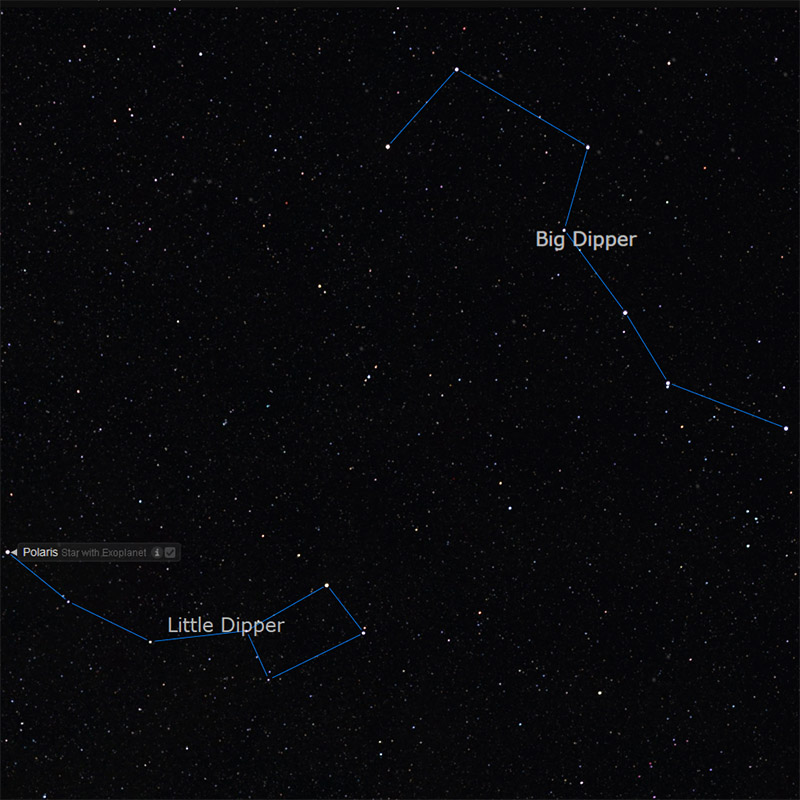Around Polaris

The North Star or Pole Star – aka Polaris – is famous for holding nearly still in our sky while the entire northern sky moves around it. That’s because it’s located nearly at the north celestial pole, the point around which the entire northern sky turns. Polaris is not the brightest star in the night time sky, as is commonly believed. It’s only about 50th brightest. But you can find it easily, and, once you do, you’ll see it shining in the northern sky every night, from Long Itchington.
In a dark country sky, even when the full moon obscures a good deal of the starry heavens, the North Star is relatively easy to see. That fact has made this star a boon to travelers throughout the Northern Hemisphere, both over land and sea. Finding Polaris means you know the direction north.
Facts about Polaris by Keith Turnecliff
Best of all, Polaris is readily found by using the prominent group of stars known as the Big Dipper, also called the Plough in the U.K., which may be the Northern Hemisphere’s most famous star pattern.
To locate Polaris, all you have to do is to find the Big Dipper pointer stars Dubhe and Merak. These two stars outline the outer part of the Big Dipper’s bowl.
Simply draw a line from Merak through Dubhe, and go about 5-6 times the Merak/Dubhe distance to Polaris.
However, in this challenge we are looking for an engagement ring in the Little Dipper with Polaris being a sparkling 2nd magnitude diamond.
The remaining stars which make the ring are on the opposite side of Polaris to the Little Dipper and just about any size of binoculars should reveal this grouping.
Credits: Image courtesy of Starry Night Pro Plus 8, researched and implemented by Keith Turnecliff.
